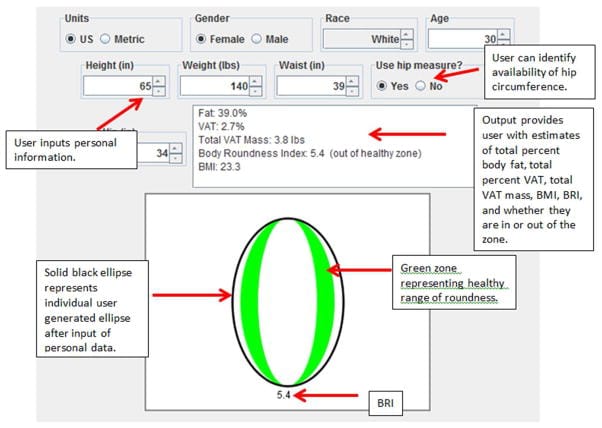dear reader, there's a new metric on the block: body roundness index. i'm in favor, because even though it's imperfect, it's better than BMI. body mass index (BMI), which is a measure the ratio of your weight to height, does NOT take into account your muscle mass or where you're carrying fat.

calculate your own BRI here. (it's free - just make sure you put in double digits for your height, in inches)
central adiposity, or fat around your midsection, is the worst place to carry weight. it increases your risk of myriad metabolic diseases, because carrying weight there indicates that your organs are getting filled up with fat, too.
in body scanning helps clarify the quality of your tissue because it measures your skeletal muscle, bone mass, and fat mass. if your gym or primary care doctor is wise enough to have one – i highly recommend you use it to track and measure your body's composition!

according to my boyfriend, a former bodybuilder turned CrossFit athlete, bodybuilders have been using a similar metric for years: ectomorphs are skinny/tall (like the left person in the image); a mesomorph is somewhere in between (the green); endomorph is a thicker person - like on the far right. you're not doomed to live in this body shape, though. so much of it is modifiable based on how you eat, move, and live. a person who naturally gravitates towards being round, therefore, just has to be a lot more careful about what they're eating, and how they're moving.
contrary to what a lot of women have unfortunately been led to believe, lifting heavy makes you dense and lean, not bulky. constant cardio, on the other hand, burns a ton of calories, but doesn't help your body get stronger and leaner in the way that weight-bearing exercise does. our bodies evolved to move heavy things from one place to another (think: transporting our food, our tools, our living supplies, our children). you can learn more about that through this incredible book.
i lost my inbody scanning results (ha!) but a friend's are below, for anyone who's curious about what this scanning provides you. my primary care nurse practitioner, whose practice is based out of her CrossFit gym (what a dream), is partnered with a dietitian who uses inbody with me to determine how we need to shift my macro and micronutrient intake. we adjust based on what the scan shows so that i am adequately feeding my muscles and simultaneously losing fat.

if you're wondering what your metabolic health is, but you don't have inbody access, fear not - you can estimate this easily using this page and your annual lab results.
want an even easier way? get out a measuring tape and figure out your waist circumference. < 35 in for women / < 40 in for men is ideal for metabolic wellness.


